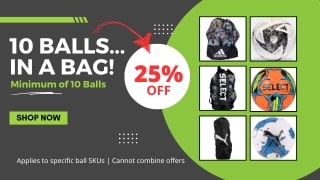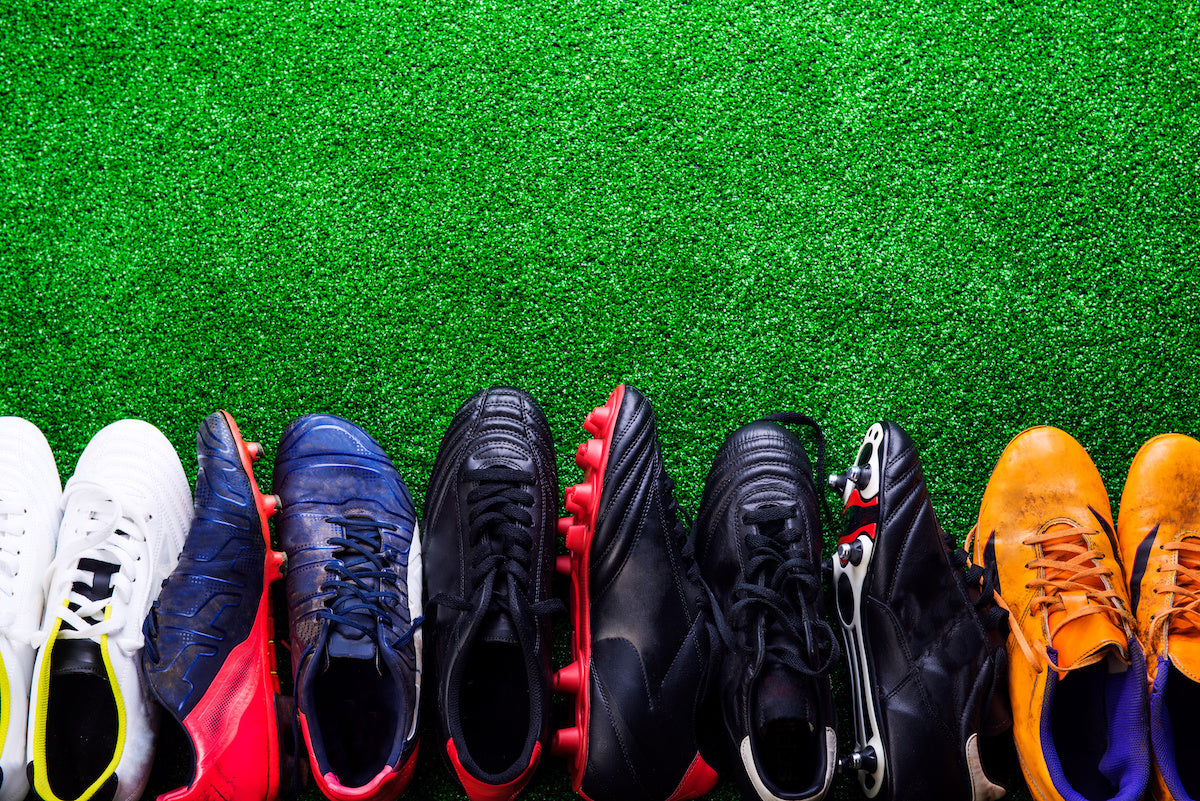For anyone reading this who considers themselves a serious soccer player, owning the right pair of cleats is nothing less than essential. The question that many players inevitably, at some point in their journey, ask themselves is this: “how do I pick the perfect pair of cleats?”
Of course, there is no such thing as “perfect,” especially when it comes to soccer gear. That said, doing your research is essential to finding the pair that works for you. That’s where we come in.
Below are four basic steps that will help you narrow your search for the ideal pair of soccer cleats. Read on:
Part One: Different Types of Soccer Cleats
There is no such thing as the gold standard when it comes to cleats, because every player’s needs, wants, and physical specifications will vary from person to person. There are a few things that are important to remember:
Firm Ground or Molded Cleats: Cleats that are sold as “firm ground” are intended for use on outdoor grass surfaces (ideally, slightly wet grass surfaces). Typically, these cleats have non-removable PU/TPU/rubber studs and can be played on thin grass and/or lush artificial grass.
Soft Ground Cleats: Cleats that are sold as “soft ground” cleats are intended for muddy grass. Most soft ground cleats are metal-tipped and/or detachable studs. This allows the player to adjust the length of its studs based on grass conditions.
Indoor Soccer Cleats: Indoor cleats are generally intended for use on either asphalt or hard interior surfaces. Most of these indoor soccer shoes have a rubber outsole, making it look more casual than other soccer cleats.
Artificial Turf Soccer Cleats: Turf cleats are generally intended for very thin, hard grass or artificial turf. They come with shorter and non-removable studs. The main difference with these shoes are the number of studs you get versus regular grass soccer cleats.
Among the zenith in contemporary soccer cleats, you’ll find many of the “usual suspects,” including Nike, Adidas, and Puma. Keep in mind, paying for a brand name isn’t the same thing as paying for quality; that said, these companies are known for maintaining a certain objective standard when it comes to the integrity of the products they manufacture. Among our current best sellers are the Nemeziz.1 FG’s from Adidas, which are now available in a variety of sizes in purple, pink and green colors.
Part Two: Advantages of Wearing Cleats
It is not hyperbolic to say that, for the average soccer player, a pair of cleats is one of the most valuable pieces of athletic equipment that they will ever own. So, why are cleats the only form of footwear that make sense for soccer play, indoors or outdoors?
It all comes down to the natural advantage that the cleats offer the player. Did you know, for instance, that the insole of your average cleat can influence the trajectory of the ball itself, particularly as it relates to the player’s control of said ball? Or that the outer soles of a cleat are made the way they are with the intention of absorbing shock? These are small but crucial details that ultimately offer the player an edge over the competition. Thus, the crucial nature of owning the right pair of cleats must not be overlooked.
There are also, generally speaking, two varieties of soccer cleats:
Synthetic Soccer Cleats: Plenty of players opt for the synthetic route; many pairs are water resistant and relatively easy to maintain. One of our favorite pairs of synthetic soccer cleats is the Adidas JR Predator 2.03, which comes decked out in a striking red-and-black color scheme, with lace closure, all designed for powerful firm ground play.
Leather Soccer Cleats: Many players claim that leather cleats are ultimately more comfortable, as they are structurally designed to mold with the shape of the player’s foot.
If you’re in the market for a new pair of cleats, you have options! And who among us doesn’t love a little variety?
Part Three: What To Look For When Picking A Pair of SoccerCleats
There are a number of things to keep in mind when searching for the right pair of cleats. Ask yourself questions, and do the requisite investigating:
- How does one convert a man’s soccer cleat size to that of a woman’s?
- How do collars figure into the equation, as in high, low, or mid?
- Do your feet respond a certain way to certain fabrics?
- Do you have wide feet?
Some of the fabrics that are frequently employed to make cleats include kangaroo leather, calfskin leather, and screw-in studs for traction. There is also the question of whether or not the customer prefers laced cleats, or cleats without laces. We should emphasize that there is no right or wrong answer here, and that what the customer ultimately decides to purchase will largely be a matter of personal preference.
- High-cut collars are above the ankles. These are becoming more and more less popular with players, because although it helps protect the ankles, players have a hard time controlling the ball and moving laterally.
- Mid-cut collars cut off at or just below the ankles.
- Low-cut collars cut low just below the ankles. Most soccer players choose low cut soccer cleats, because they give the most flexibility and control.
If you’re looking for a simple but beautifully engineered pair that’s designed so that you don’t physically overextend yourself, may we recommend the Legend 7 Pro from Nike, a breathable, proficient prototype that is specifically designed for traction on firm ground fields.For those who want something light without having to sacrifice style, we might point them in the direction of the Jr. Future 4.4 from Puma, which comes with multiple lacing options and a sturdy but malleable synthetic frame that makes it a fine option for either indoor or outdoor play.
Part Four: What To Wear Based On What Position You Play
Many of you reading this are probably already aware of this fact, but more often than not, the right pair of cleats have to work for the right player, based on what position they play. For example: forwards are encouraged to shop for cleats that enhance speed and agility while on the field, while midfielders, since they do so much ball-handling, should seek out a pair with some durable outer soles, so as to double down on ball control.
Defenders are going to want to look for a pair that combines those two aforementioned qualities, for which we might suggest the Nemeziz 19.3 from Adidas in stunning royal blue. Meanwhile, the goalies – who, no joke, have one of the hardest jobs on the field – are going to want something that’s comfortable above all else. For them, we might suggest something that allows the players to remain light on their feet, like Adidas’ Copa Gloro 20.2, which comes equipped with an outer sole that’s lighter than usual, plus a knit collar that promises an overall comfier fit.
No matter what you do, don’t skimp when it comes to purchasing the right pair. Treat yourself! If you do the proper maintenance, a pair of cleats is an investment. We’re all for not spending money that you don’t necessarily need to spend, but this isn’t the type of thing you want to be stingy about. Believe in and invest in yourself!
Now go out there and get you a pair…
Share on:






























